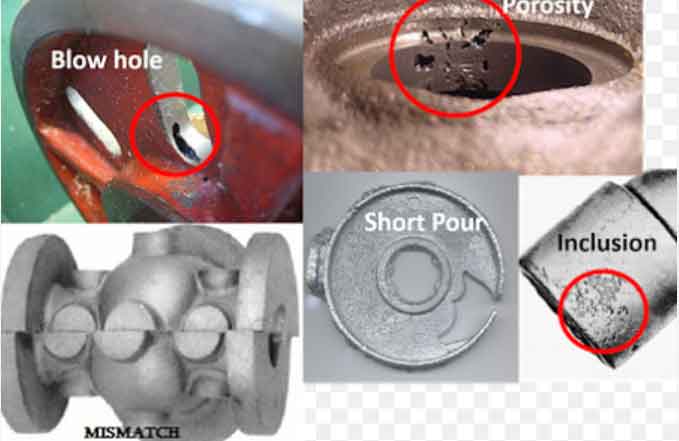
Casting defects can significantly impact the quality and performance of metal components, posing challenges in the production process. Overcoming these defects is crucial to ensure the integrity and reliability of the final products. This article delves into effective strategies for overcoming casting defects in metal component production.
- Robust Design and Simulation:
- Begin with a robust component design that considers factors such as geometry, material selection, and casting feasibility. Utilize computer-aided design (CAD) and simulation software to analyze and optimize the design for casting process considerations, minimizing the risk of defects.
- Material Selection and Quality Control:
- Select materials with suitable metallurgical properties for the intended application. Implement stringent material quality control measures, including inspection and testing, to ensure consistent material properties and reduce the risk of defects caused by material inconsistencies.
- Process Optimization:
- Optimize the casting process to minimize defects. Analyze and optimize process parameters such as pouring temperature, solidification time, cooling rates, and gating and riser design. Use computer simulations and experimental trials to identify optimal process conditions.
- Melt Treatment and Alloy Modification:
- Employ effective melt treatment techniques to remove impurities and enhance the cleanliness of the molten metal. Consider alloy modifications to mitigate specific defects associated with alloy composition, such as shrinkage or cracking.
- Mold and Core Design:
- Optimize mold and core design to facilitate proper metal flow, minimize turbulence, and reduce the risk of defects. Consider factors such as mold and core materials, venting, and surface finish to ensure smooth filling and solidification.
- Gating and Riser Design:
- Design gating and riser systems to ensure proper filling, feeding, and solidification. Optimize the size, shape, and placement of gates and risers to control flow and minimize defects like shrinkage, porosity, or misruns.
- Quality Control and Inspection:
- Implement comprehensive quality control measures throughout the casting process. Conduct visual inspections, dimensional measurements, and non-destructive testing (NDT) to detect and eliminate defects at different stages of production.
- Continuous Monitoring and Feedback Loop:
- Continuously monitor the casting process and collect data on defect occurrence and process parameters. Establish a feedback loop between production, quality control, and engineering teams to analyze data, identify patterns, and take proactive measures for defect prevention.
- Training and Skill Development:
- Provide comprehensive training programs for operators, technicians, and quality control personnel involved in the casting process. Enhance their knowledge and skills in defect recognition, process optimization, and problem-solving techniques.
- Collaboration and Lessons Learned:
- Foster collaboration among different teams involved in the production process. Encourage knowledge sharing, lessons learned sessions, and cross-functional problem-solving to collectively tackle casting defects and implement improvements.
Overcoming casting defects in metal component production requires a combination of robust design, process optimization, quality control, and continuous improvement efforts. By focusing on material selection, process optimization, mold and core design, and effective quality control measures, manufacturers can minimize defects and ensure the production of high-quality metal components. Collaboration, training, and a proactive approach to defect prevention contribute to ongoing improvement and the battle against flaws in casting processes.
